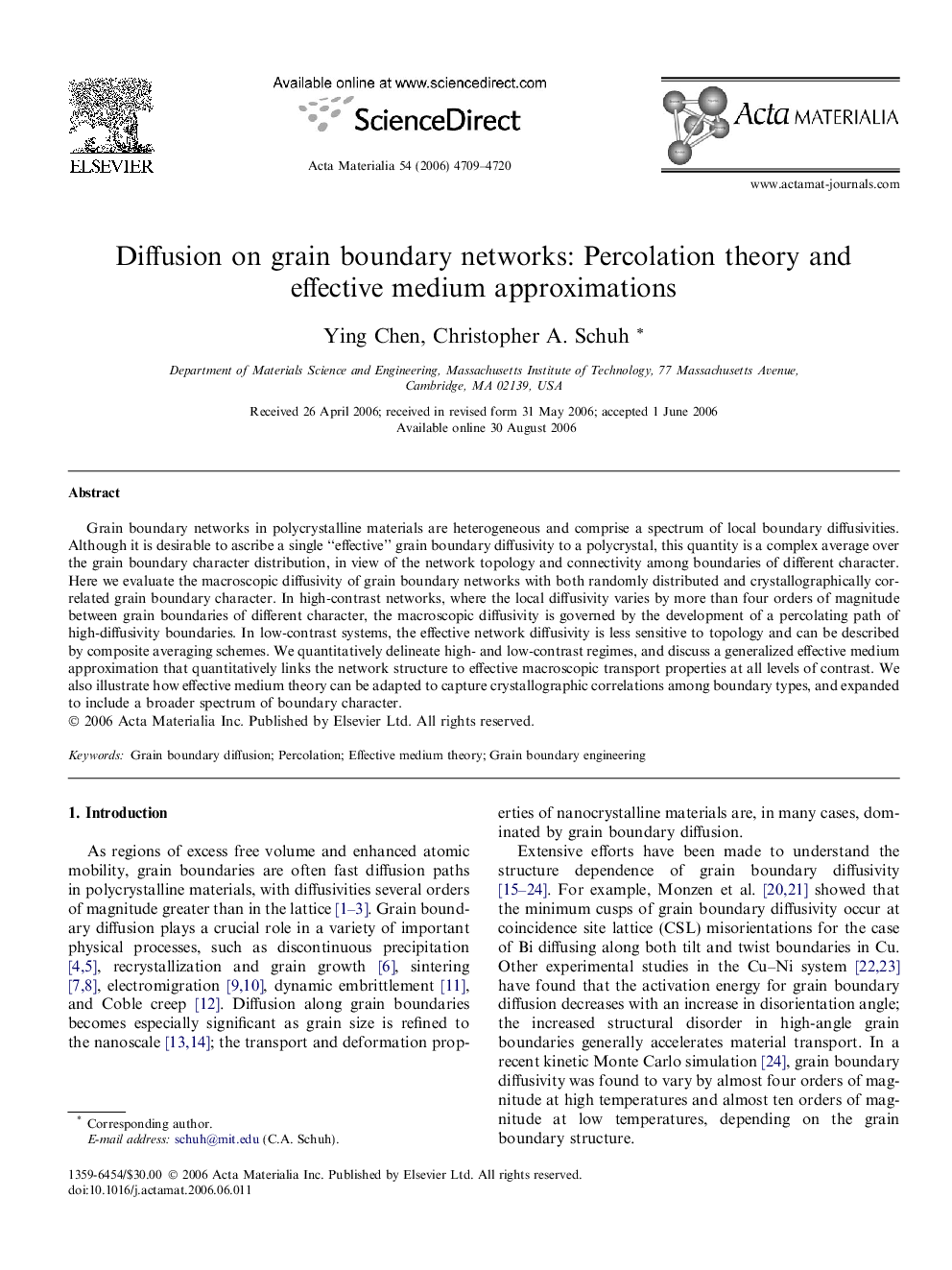| Article ID | Journal | Published Year | Pages | File Type |
|---|---|---|---|---|
| 1450133 | Acta Materialia | 2006 | 12 Pages |
Grain boundary networks in polycrystalline materials are heterogeneous and comprise a spectrum of local boundary diffusivities. Although it is desirable to ascribe a single “effective” grain boundary diffusivity to a polycrystal, this quantity is a complex average over the grain boundary character distribution, in view of the network topology and connectivity among boundaries of different character. Here we evaluate the macroscopic diffusivity of grain boundary networks with both randomly distributed and crystallographically correlated grain boundary character. In high-contrast networks, where the local diffusivity varies by more than four orders of magnitude between grain boundaries of different character, the macroscopic diffusivity is governed by the development of a percolating path of high-diffusivity boundaries. In low-contrast systems, the effective network diffusivity is less sensitive to topology and can be described by composite averaging schemes. We quantitatively delineate high- and low-contrast regimes, and discuss a generalized effective medium approximation that quantitatively links the network structure to effective macroscopic transport properties at all levels of contrast. We also illustrate how effective medium theory can be adapted to capture crystallographic correlations among boundary types, and expanded to include a broader spectrum of boundary character.
